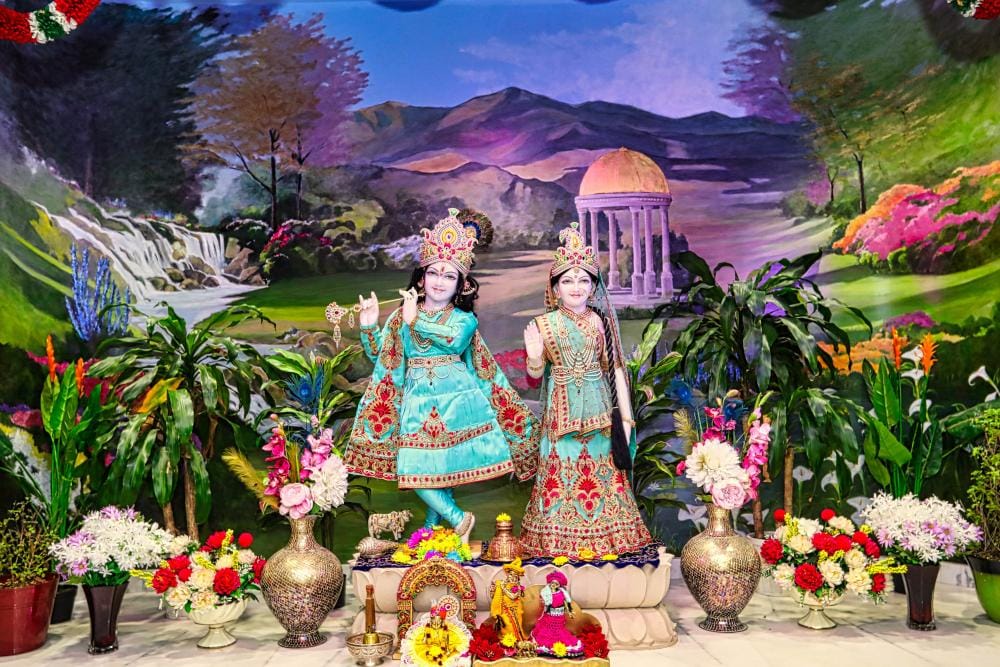Devotional service to Shri Krishna is performed by following the nine methods as follows:
Hearing
Chanting
Remembering
Serving the lotus feet
Worshipping
Praying
Executing the orders
Fraternizing
Fully surrendering
In this series, this week we will discuss the third one – remembering.
Remembering or smaraṇam requires active participation and concentration because we have to focus the mind on someone or something. Some like to focus on a light while others like to focus on the image of OM between the two eyebrows, and yet others prefer to focus on the breath.In his very famous kirtan, Sadhana Karu Pyare, Shree Maharajji said,
सामने हरि को बिठा कर, साधना करु प्यारे।
sāmne hari ko biṭhā kara, sādhanā karu pyāre [16]
In this verse, Shree Maharajji says that we should bring the image of God before our mind as we sit down for our daily sadhana. In other words, he is guiding us to practice roopdhyan.
मन को जो भाये बना लो, रूप वैसा प्यारे।
mana ko jo bhāye banā lo, rūpa vaisā pyāre [15]
Further, Shree Maharajji coaches us that while concentrating on the image of the Supreme Lord, we have the freedom to concentrate on any form we choose such as Radha Krishna or Sita Ram.
In fact, Shree Maharajji emphasized the practice of roopdhyan to such an extent that the analogy used was roopdhyan is to sadhana as life-airs is to the body.
However, it can become quite challenging to continuously focus on one image for more than a minute or say, five minutes. So Shree Maharajji further explained that the form doesn’t have to be a statue. The form can be active i.e. imagine Radha Krishna playing around or Shree Krishna with the cowherds and the cows or Radha Rani with her sakhi friends. Since there are a maximum number of leelas or stories from the life of Shree Krishna, it becomes easier to focus on him. In other words, he encouraged us to constantly think of Radha Krishna and keep their image, front and center, in our mind at all times.
Click here to watch a quick 10 min video by Swami Mukundananda where he explains the above verses and emphasizes meditating upon the form of God.
This concept of remembering (smaraṇam), when combined with hearing (śhravaṇam) and chanting (kīrtanam), becomes a very powerful aid on the spiritual journey. This trifecta is also commonly called the “Three fold path of Bhakti” or “Trida Bhakti.”
Click here to watch this short clip from Swami Mukundananda explaining the concept of TridaBhakti and its importance in our daily life.
Now it’s your turn to try. For the next 30 days when you sit down for meditation or satsang, focus the mind on Radha Krishna. We’d love to hear of the impact this has on your bhakti or devotion.


